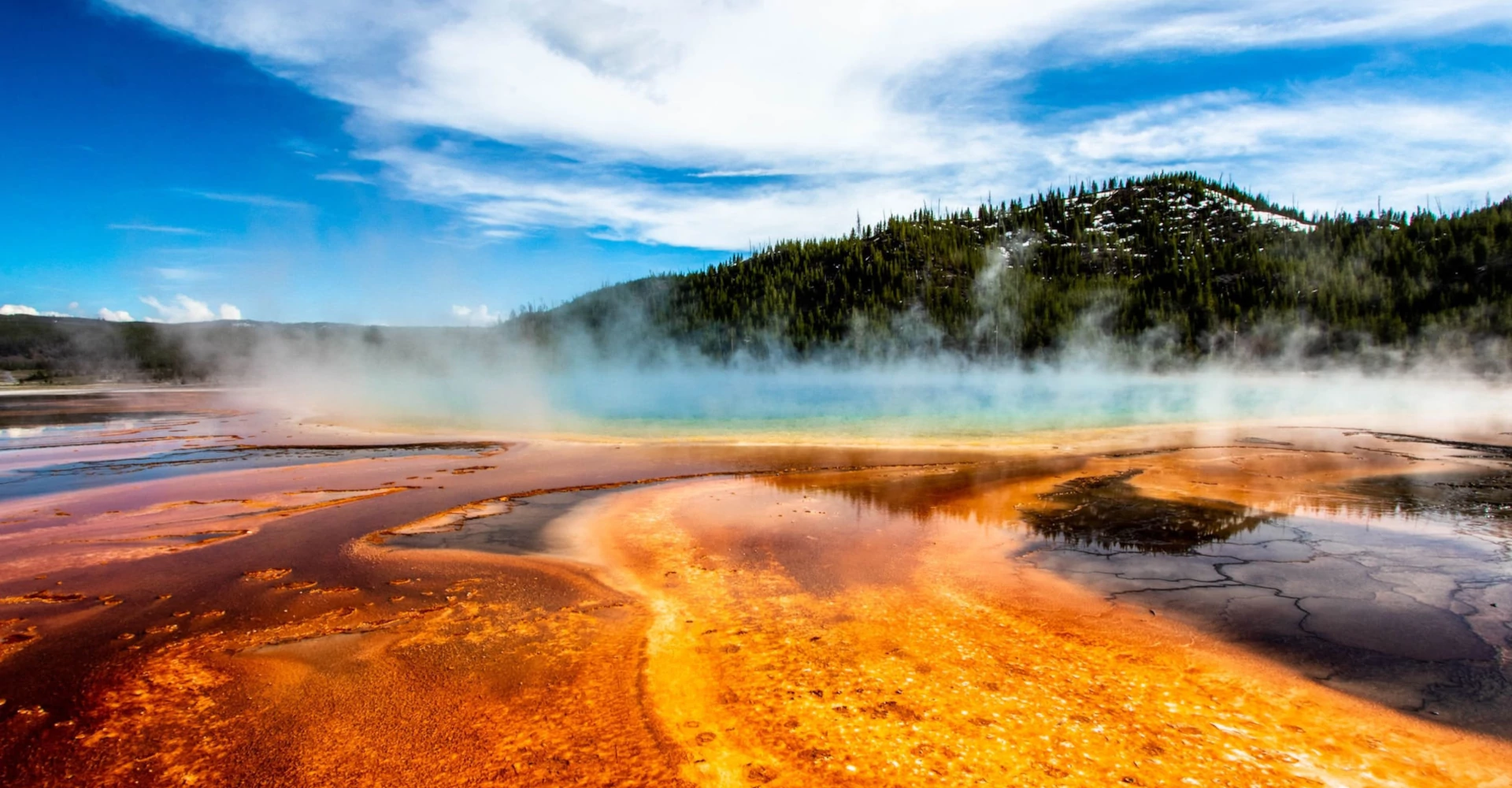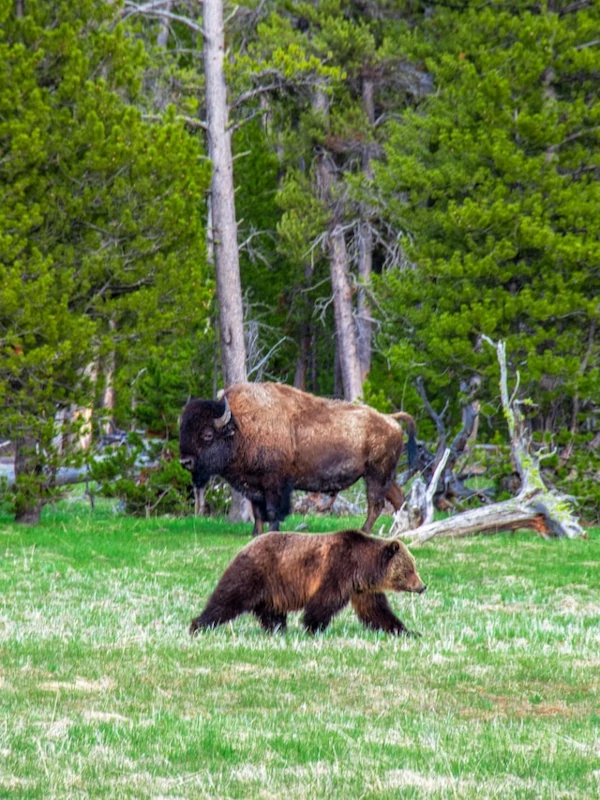One of Yellowstone's most distinctive features is its captivating geothermal activity. The park is home to over 10,000 geothermal features, including bubbling mud pots, steaming geysers, and colorful hot springs. The iconic Old Faithful geyser is renowned for its predictability, erupting approximately every 90 minutes, sending a column of scalding water and steam into the air. Grand Prismatic Spring, a breathtakingly colorful pool, is another must-see geothermal marvel that captivates visitors with its vibrant hues and unique microbial mats.
Yellowstone's diverse ecosystems support a rich array of wildlife. Grizzly and black bears, wolves, bison, elk, and numerous other species roam freely within the park's boundaries. Hayden Valley and Lamar Valley are renowned for their wildlife-watching opportunities, offering visitors the chance to observe these majestic creatures in their natural habitats. The park is also home to a remarkable variety of bird species, making it a paradise for birdwatchers.
Beyond the geothermal wonders and wildlife, Yellowstone National Park boasts a network of lakes, waterfalls, and canyons. The Yellowstone River carves through the Grand Canyon of the Yellowstone, creating awe-inspiring vistas that leave visitors breathless. Popular attractions like Yellowstone Lake, the largest high-altitude lake in North America, and the Lower Falls of the Yellowstone River, which is twice as high as Niagara Falls, add to the park's stunning natural beauty.








